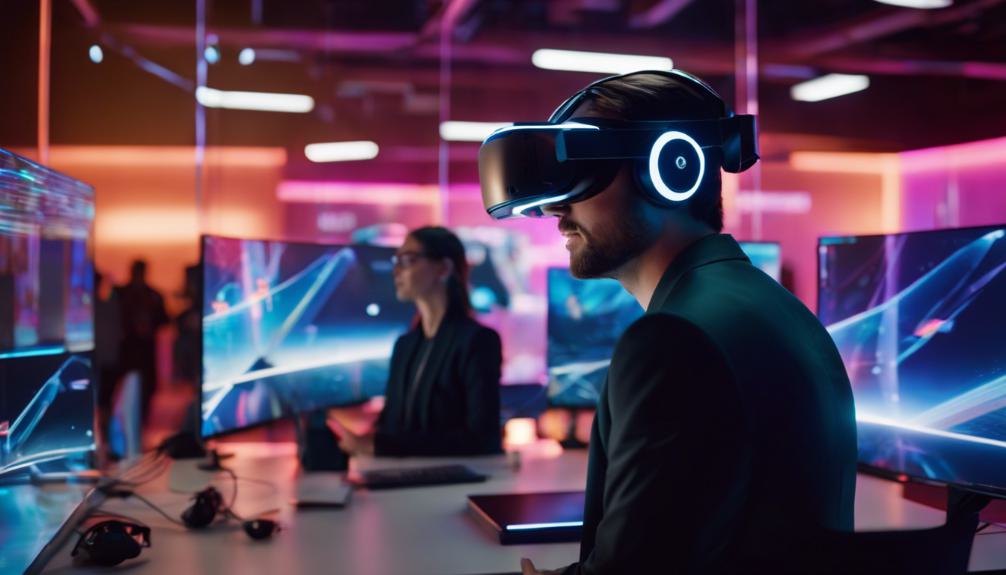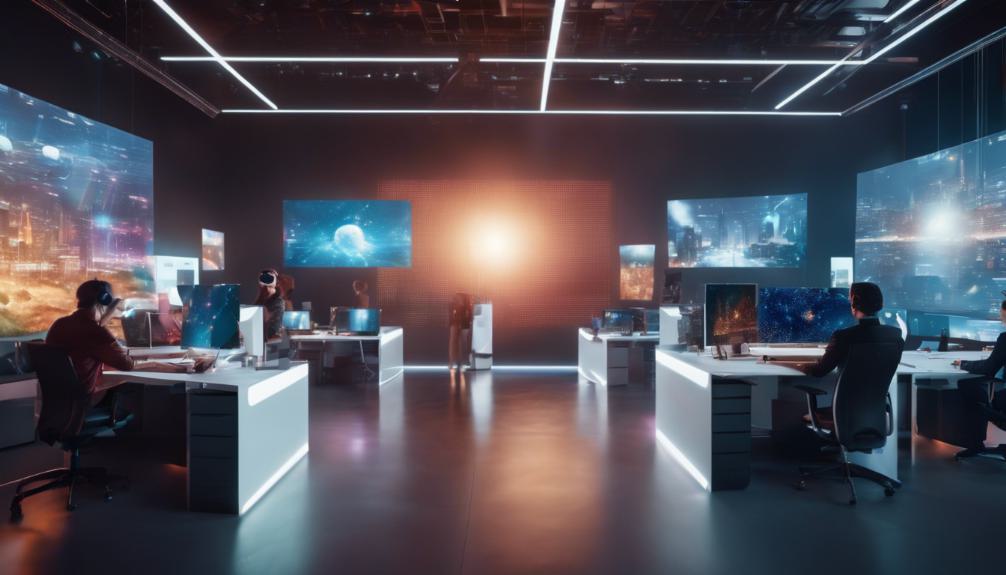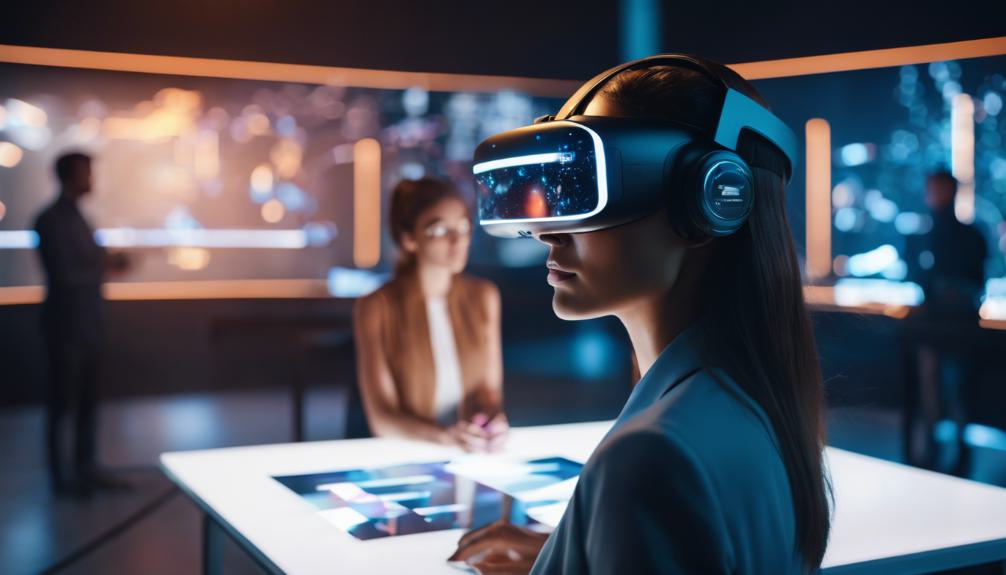As organizations navigate the evolving landscape of digital transformation, the Metaverse emerges as a pivotal tool in reshaping collaboration and training paradigms. Its immersive 3D environments and cutting-edge virtual and augmented reality technologies enable teams to seamlessly interact across global divides, fostering communication and efficiency. This innovation not only redefines teamwork but also revolutionizes training, providing tailored, interactive simulations that enhance learning and skill development. How does this integration impact company culture and workflow dynamics? The following sections will explore these transformative aspects in greater detail, shedding light on the profound implications for the modern workplace.
Key Takeaways
- Immersive 3D tools and environments enable effective teamwork, transcending geographical boundaries.
- Virtual team building in the Metaverse fosters deeper employee engagement and stronger interpersonal connections.
- Metaverse-based training offers interactive simulations, enhancing practical learning and reducing physical setup costs.
- Real-time VR and AR technologies support seamless virtual meetings and collaboration.
- The Metaverse nurtures inclusive, dynamic work environments, encouraging open communication and innovation.
Understanding the Metaverse

The Metaverse, a concept first introduced by Neal Stephenson in his 1992 novel Snow Crash, represents a shared 3D digital world characterized by scalability, real-time 3D interactions, and data continuity. This virtual domain leverages advanced 3D simulation technologies to create immersive environments where users can interact seamlessly.
Digital connectivity is at the core of the Metaverse, linking disparate virtual spaces into a cohesive, interconnected network. As current technologies evolve, they are increasingly meeting the demands of this expansive digital universe. Challenges such as data privacy and business agreements remain, but the potential for transformative digital experiences is undeniable.
Prominent figures like Satya Nadella and Mark Zuckerberg underscore its imminent mainstream adoption, heralding a new era of digital interaction.
Adapting Work Practices
Shifting work practices to the Metaverse requires a thorough reassessment of existing digital tools and processes. The migration to virtual meetings and remote teamwork necessitates the integration of advanced VR and AR technologies. These immersive solutions are not merely add-ons but pivotal in creating a seamless, collaborative work environment.
Companies must evaluate their current infrastructure, ensuring it supports real-time communication and data continuity. Additionally, reskilling employees becomes essential to harness the full potential of the Metaverse, preventing job displacement and enhancing productivity.
While technical hurdles and privacy concerns persist, the strategic adaptation of work practices offers unparalleled opportunities for innovation and efficiency in the digital workplace.
Enhanced Workplace Collaboration

Enhanced workplace collaboration in the Metaverse leverages advanced 3D tools and immersive environments to foster more effective teamwork and innovation.
By facilitating virtual teamwork, employees can interact in real-time within a shared digital space, transcending geographical boundaries. This immersive setting enhances communication, allowing for more nuanced and dynamic exchanges that are often lost in traditional remote work settings.
The Metaverse enables the creation of virtual meeting rooms, collaborative workspaces, and interactive project management tools, which streamline workflows and boost productivity. This transformation not only improves the quality of collaborative efforts but also accelerates decision-making processes and innovation.
As organizations adapt, the Metaverse stands poised to redefine how teams coalesce and achieve shared objectives.
Evolving Company Culture
In addition to adopting the Metaverse within companies catalyzes a transformation in organizational culture, fostering deeper employee engagement and innovative collaboration.
Virtual team building becomes a cornerstone, enabling geographically dispersed employees to participate in immersive experiences that strengthen interpersonal connections and enhance teamwork.
This digital paradigm shift nurtures a more inclusive and dynamic work environment, breaking down traditional hierarchies and encouraging open communication.
Additionally, immersive experiences in the Metaverse allow for creative problem-solving and brainstorming sessions, driving innovation and agility within the workforce.
Transformative Training Methods

Building on the cultural evolution within organizations, the Metaverse ushers in transformative training methods that redefine how employees acquire and apply skills.
By leveraging immersive simulations, companies can create realistic scenarios that enhance practical learning experiences, allowing employees to engage in interactive learning environments. This shift from traditional training methods facilitates a deeper understanding of complex concepts and improves retention rates.
Interactive learning through the Metaverse makes training more engaging and adaptable, catering to individual learning paces and needs. Additionally, these methods greatly reduce the risks and costs associated with physical training setups, particularly in high-risk industries.
Ultimately, the Metaverse is not just enhancing training but revolutionizing the very fabric of employee development and skill acquisition.



